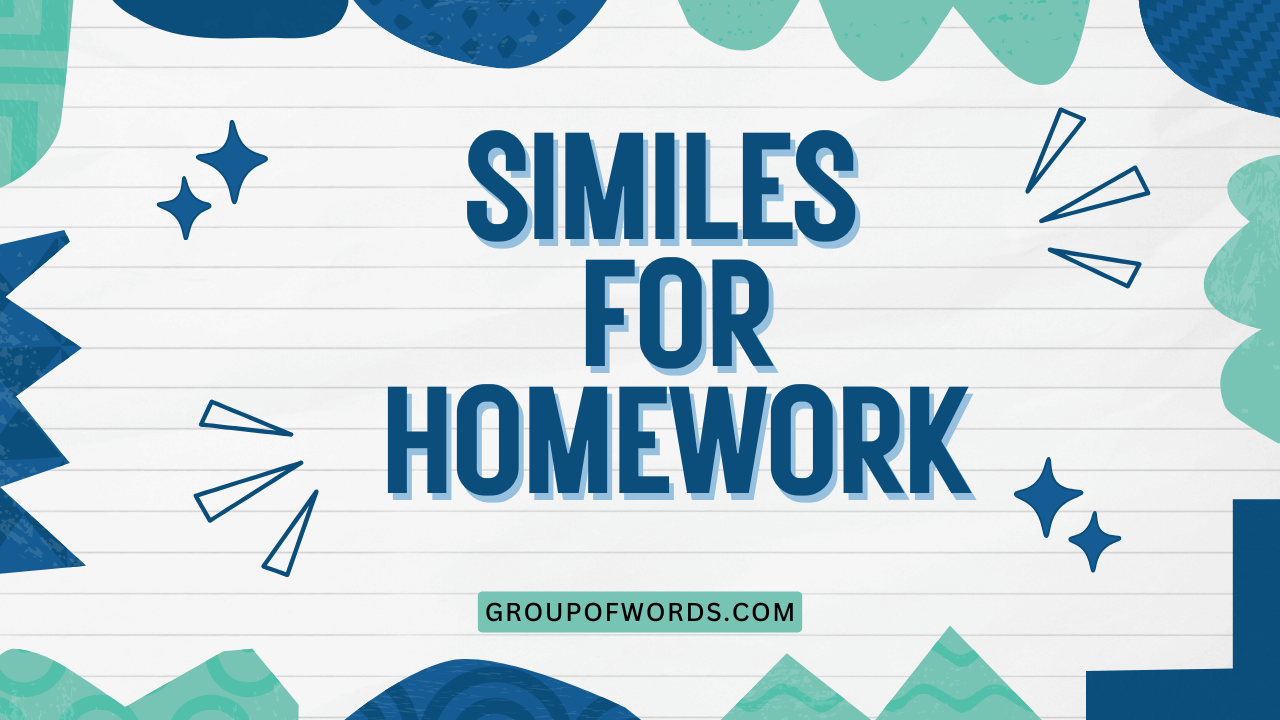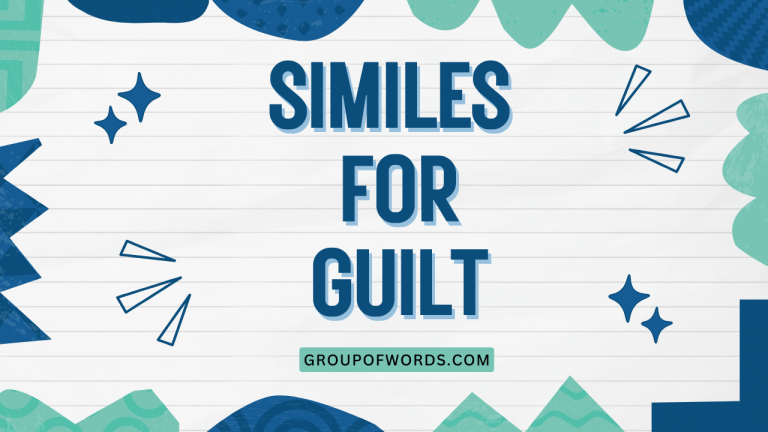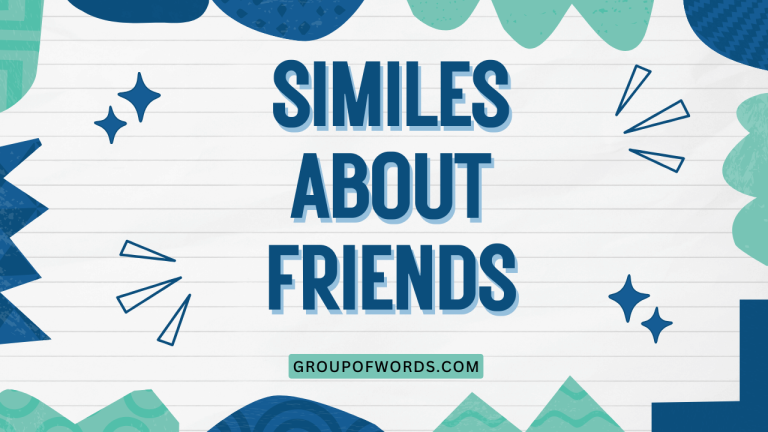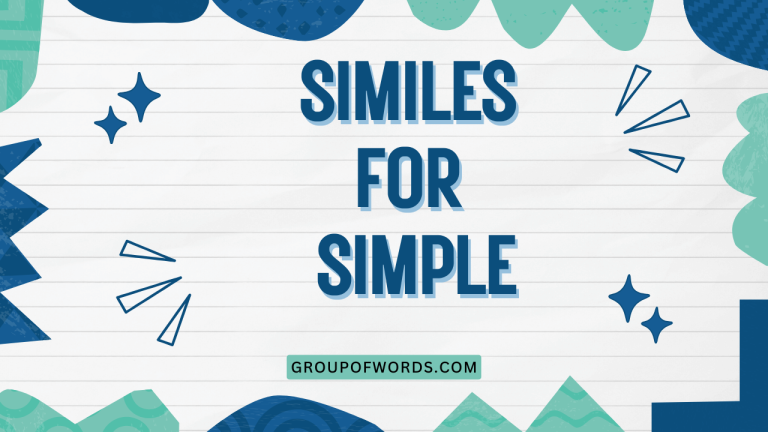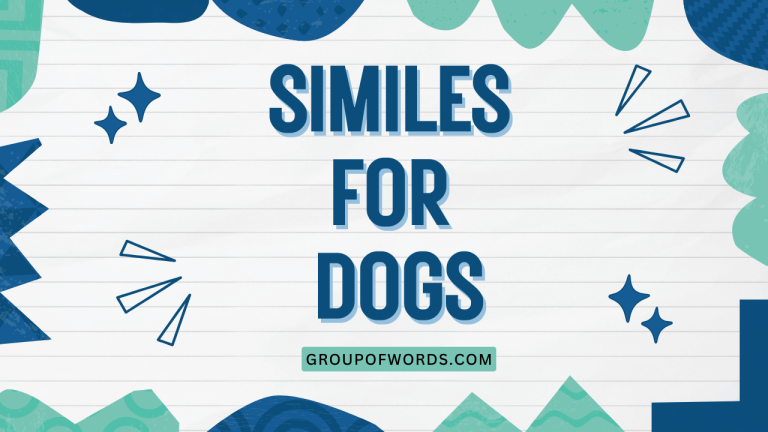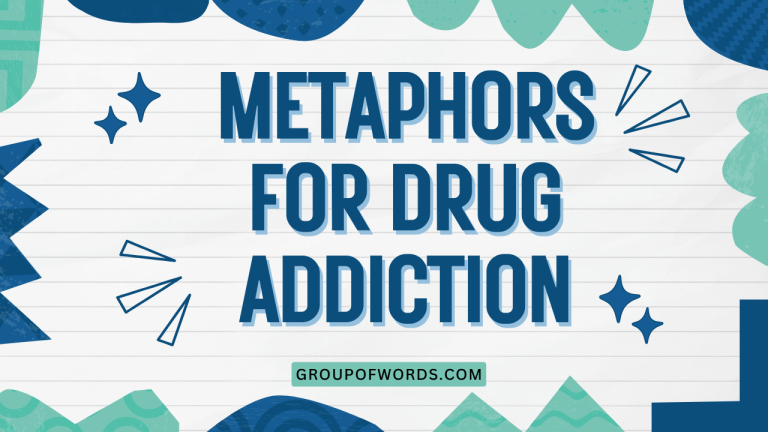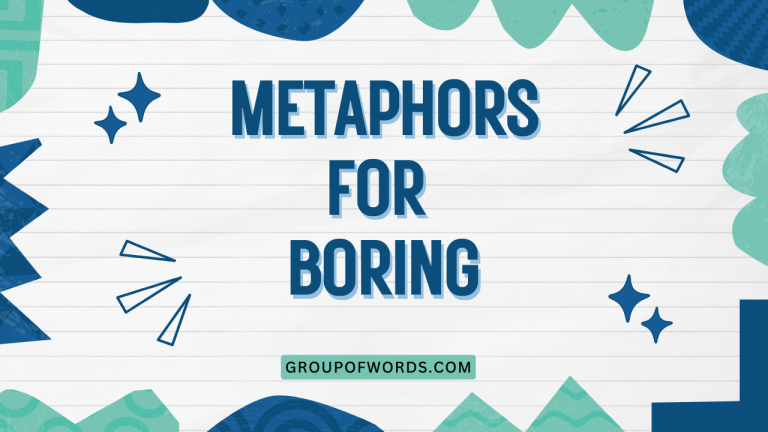Similes for Homework: A Comprehensive Guide
Understanding similes is crucial for enhancing your writing and comprehension skills. Similes, a type of figurative language, allow you to create vivid comparisons that make your writing more engaging and descriptive.
This article provides a thorough exploration of similes, focusing on their structure, types, and usage, especially in the context of describing the experience of doing homework. Whether you’re a student, a teacher, or simply someone interested in improving their language skills, this guide will equip you with the knowledge and practice you need to master similes.
Table of Contents
- Introduction
- Definition of Simile
- Structural Breakdown of Similes
- Types of Similes
- Examples of Similes for Homework
- Usage Rules for Similes
- Common Mistakes with Similes
- Practice Exercises
- Advanced Topics: Extending Simile Usage
- Frequently Asked Questions (FAQ)
- Conclusion
Introduction
Similes are powerful tools in the world of language, enabling us to draw comparisons between dissimilar things using words like “like” or “as.” Mastering similes not only enriches your writing style but also sharpens your critical thinking and interpretive skills. In this article, we will delve into the intricacies of similes, specifically focusing on how they can be used to describe the often relatable experience of doing homework.
This guide is designed for learners of all levels, from beginners to advanced students, offering clear explanations, practical examples, and engaging exercises to solidify your understanding.
Definition of Simile
A simile is a figure of speech that directly compares two different things, typically using the words “like” or “as.” The purpose of a simile is to make a description more vivid and relatable by highlighting a shared quality or characteristic between the two things being compared. Similes enhance writing by creating imagery and helping the reader understand a concept more clearly. They are a fundamental element of figurative language and are widely used in literature, poetry, and everyday speech.
Similes belong to the broader category of figures of speech, which also includes metaphors, personification, and hyperbole. Unlike metaphors, which imply a direct equivalence (e.g., “He is a lion”), similes make an explicit comparison (e.g., “He is brave like a lion”). The function of a simile is to illustrate a point or create a specific effect through comparison. They provide a way to express complex ideas in a more accessible and engaging manner.
Similes are used in various contexts, ranging from formal writing to informal conversation. In literature, they add depth and texture to descriptions and characterizations.
In persuasive writing, they can make arguments more compelling by drawing parallels between the subject and something familiar to the audience. In everyday speech, similes add color and expressiveness to our language, making our communication more interesting and memorable.
Structural Breakdown of Similes
The basic structure of a simile consists of three main components: the subject, the linking word (“like” or “as”), and the object of comparison. The subject is the thing being described, while the object of comparison is what the subject is being compared to. The linking word establishes the connection between the two. Understanding this structure is essential for creating effective and grammatically correct similes.
The linking word is a crucial element of a simile. While “like” and “as” are the most common linking words, other words such as “than” or phrases such as “similar to” can also be used, although less frequently.
The choice of linking word can subtly affect the tone and emphasis of the comparison. For example, “Homework is like climbing a mountain” suggests a challenging but rewarding experience, while “Homework is as tedious as watching paint dry” conveys a sense of boredom and frustration.
The order of the elements in a simile can sometimes be varied for stylistic effect, but the basic structure remains the same. For instance, instead of saying “She sings like an angel,” you could say “Like an angel, she sings.” However, it’s important to ensure that the altered structure maintains clarity and doesn’t create ambiguity.
The key is to ensure that the comparison is easily understood and that the simile effectively conveys the intended meaning.
Types of Similes
While all similes share the basic structure of comparing two things using “like” or “as,” they can be categorized based on the type of comparison they make or the effect they create. Understanding these different types can help you use similes more effectively in your writing and communication.
Descriptive Similes
Descriptive similes focus on highlighting a specific attribute or characteristic of the subject. These similes aim to create a vivid image in the reader’s mind by comparing the subject to something that embodies that attribute.
For example, “The textbook was as heavy as a brick” emphasizes the weight of the textbook.
Explanatory Similes
Explanatory similes are used to clarify or explain a concept by comparing it to something more familiar or understandable. These similes help the reader grasp a complex idea by drawing a parallel to something they already know.
For example, “Algebra is like learning a new language” helps to convey the idea that algebra involves mastering a set of rules and symbols.
Humorous Similes
Humorous similes are designed to be funny or ironic. They often involve comparing the subject to something absurd or unexpected, creating a comedic effect.
For example, “His explanation was as clear as mud” uses a simile to humorously highlight the lack of clarity in his explanation.
Ironic Similes
Ironic similes are used to convey a meaning that is the opposite of the literal meaning. These similes often involve comparing the subject to something that is conventionally associated with a positive attribute, but in a way that suggests the opposite is true.
For example, “He’s as sharp as a marble” uses a simile to ironically suggest that he is not very intelligent.
Examples of Similes for Homework
Here are some examples of similes related to the topic of homework, categorized by the aspect of homework they describe. These examples aim to illustrate how similes can be used to express different feelings and experiences associated with homework.
Similes Describing the Difficulty of Homework
The table below presents similes that focus on the challenging aspects of homework, such as its difficulty, complexity, and the effort required to complete it.
| Simile | Explanation |
|---|---|
| The homework was as hard as rocket science. | Emphasizes the extreme difficulty of the homework. |
| Solving the equation felt like climbing Mount Everest. | Highlights the immense effort required to solve the equation. |
| The assignment was as confusing as a maze. | Conveys the feeling of being lost and disoriented while working on the assignment. |
| Understanding the theorem was like deciphering an ancient code. | Suggests that the theorem was extremely complex and difficult to understand. |
| The workload felt like carrying the weight of the world on my shoulders. | Emphasizes the overwhelming burden of having a lot of homework. |
| The instructions were as clear as mud. | Highlights the lack of clarity in the instructions. |
| Trying to focus was like herding cats. | Conveys the difficulty of maintaining concentration. |
| The problem was as tangled as a ball of yarn. | Suggests that the problem was complex and difficult to untangle. |
| Finishing the project felt like running a marathon. | Emphasizes the long and arduous nature of the project. |
| The research paper was as long as a novel. | Highlights the extensive length of the research paper. |
| The test was as tough as nails. | Emphasizes the extreme difficulty of the test. |
| The homework questions were as tricky as riddles. | Conveys the deceptive nature of the questions. |
| The task was as daunting as facing a dragon. | Highlights the intimidating nature of the task. |
| The assignment was as challenging as solving a Rubik’s Cube. | Suggests that the assignment required a lot of problem-solving skills. |
| The problem set was like navigating a minefield. | Conveys the risk of making mistakes while working on the problem set. |
| The math problem was as complicated as a spider web. | Emphasizes the intricate and confusing nature of the math problem. |
| The assignment felt like an uphill battle. | Suggests that the assignment was a constant struggle. |
| The homework was as demanding as training for the Olympics. | Highlights the intense effort and dedication required to complete the homework. |
| Understanding the concept was like finding a needle in a haystack. | Conveys the difficulty of grasping the concept. |
| The homework felt like a never-ending story. | Emphasizes the seemingly endless nature of the homework. |
| The exam was as stressful as a job interview. | Highlights the high-pressure environment of the exam. |
| The assignment was as intricate as a Swiss watch. | Emphasizes the detailed and complex nature of the assignment. |
Similes Describing the Time Consumption of Homework
The following table presents similes that emphasize the time-consuming nature of homework, highlighting how it can feel like it takes forever to complete.
| Simile | Explanation |
|---|---|
| Doing homework felt like watching paint dry. | Emphasizes the tedious and slow nature of doing homework. |
| The assignment took as long as building the pyramids. | Highlights the immense amount of time required to complete the assignment. |
| Working on the project felt like waiting for a glacier to move. | Conveys the feeling of extreme slowness and lack of progress. |
| The research paper took as long to write as it took to read. | Emphasizes the extensive time spent writing the research paper. |
| Finishing the homework felt like waiting for Christmas morning. | Highlights the anticipation and the feeling that it’s taking forever. |
| The lecture felt as long as a century. | Emphasizes the seemingly endless duration of the lecture. |
| Studying for the exam felt like an eternity. | Conveys the feeling that the studying period was extremely long. |
| The math problem took as much time as solving a cold case. | Highlights the extensive time required to solve the math problem. |
| The assignment seemed to stretch on like a rubber band. | Emphasizes the seemingly endless nature of the assignment. |
| Working on the project felt like navigating a time warp. | Conveys the feeling that time was distorted while working on the project. |
| The task took as long as watching grass grow. | Emphasizes the tedious and slow nature of the task. |
| The homework felt like a never-ending loop. | Highlights the repetitive and time-consuming nature of the homework. |
| The assignment stretched on like a desert highway. | Emphasizes the long and seemingly endless nature of the assignment. |
| The project took as much time as assembling a spacecraft. | Highlights the extensive time and effort required to complete the project. |
| Finishing the homework felt like reaching the end of a very long tunnel. | Conveys the feeling of relief after a prolonged and arduous task. |
| The explanation was as slow as a snail’s pace. | Emphasizes the slow and drawn-out nature of the explanation. |
| The project felt like it was aging me like fine wine. | Highlights the long and transformative nature of the project. |
| The homework seemed to take as long as it takes to learn a new language. | Emphasizes the extensive time and effort required to complete the homework. |
| Working on the essay felt like carving a statue from a mountain. | Conveys the feeling of a long and arduous creative process. |
| The assignment felt like an endless cycle of revisions. | Highlights the repetitive and time-consuming nature of the assignment. |
| The homework stretched out before me like an unpaved road. | Emphasizes the long and arduous nature of the homework ahead. |
Similes Describing the Frustration with Homework
The table below lists similes that describe the frustration and negative emotions associated with doing homework, such as feeling stressed, overwhelmed, or bored.
| Simile | Explanation |
|---|---|
| Doing homework felt like banging my head against a wall. | Emphasizes the frustration and futility of the task. |
| The assignment was as annoying as a mosquito buzzing in my ear. | Highlights the irritating and distracting nature of the assignment. |
| Trying to understand the lesson was like trying to catch smoke. | Conveys the feeling of elusiveness and frustration. |
| The homework felt like a thorn in my side. | Emphasizes the constant irritation and annoyance caused by the homework. |
| The questions were as infuriating as a broken pencil. | Highlights the frustration caused by the questions. |
| The assignment felt like a punishment. | Conveys the feeling of being unfairly burdened with work. |
| The homework was as welcome as a root canal. | Emphasizes the unpleasantness of the homework. |
| The assignment felt like a weight tied to my ankle. | Conveys the feeling of being held back and burdened by the assignment. |
| The homework was as appealing as a plate of cold oatmeal. | Highlights the lack of interest and enthusiasm for the homework. |
| Working on the project felt like navigating a minefield of errors. | Conveys the feeling of constant risk and potential for mistakes. |
| The task was as delightful as doing taxes. | Emphasizes the unpleasantness and lack of enjoyment in the task. |
| The assignment felt like a chore. | Conveys the feeling of being obligated to do something unpleasant. |
| The homework was about as fun as a trip to the dentist. | Highlights the lack of enjoyment and potential discomfort associated with the homework. |
| The project felt like a burden. | Emphasizes the feeling of being weighed down and overwhelmed by the project. |
| The assignment was as exciting as watching grass grow. | Highlights the lack of interest and stimulation in the assignment. |
| Trying to understand the material was like talking to a brick wall. | Conveys the feeling of futility and lack of progress. |
| The homework was as pleasant as a rainy day indoors. | Emphasizes the lack of appeal and potential for boredom. |
| The assignment felt like a chain around my leg. | Conveys the feeling of being restricted and unable to move freely. |
| The homework was as thrilling as reading the dictionary. | Highlights the lack of excitement and engagement in the homework. |
| Working on the project felt like swimming against the tide. | Conveys the feeling of constant struggle and resistance. |
Usage Rules for Similes
Using similes effectively requires adherence to certain rules and guidelines. These rules ensure that your similes are clear, appropriate, and impactful.
Ensure Clarity and Relevance
A good simile should clearly establish a connection between the subject and the object of comparison. The shared characteristic should be easily recognizable and relevant to the description.
Avoid using obscure or convoluted comparisons that may confuse the reader. The comparison should enhance understanding, not hinder it.
Avoid Clichés
Clichés are overused similes that have lost their impact due to overuse. Examples include “as busy as a bee” or “as strong as an ox.” While clichés may be easy to use, they often lack originality and can make your writing sound uninspired.
Strive to create fresh and original comparisons that will engage your reader.
Maintain Consistency
Ensure that the tone and style of your simile are consistent with the overall tone and style of your writing. A humorous simile may be out of place in a serious or formal context.
Choose similes that complement the mood and purpose of your writing.
Use Sparingly
While similes can enhance your writing, overusing them can make your writing sound forced and artificial. Use similes judiciously, selecting only the most effective comparisons to highlight key points or create specific effects.
Too many similes can overwhelm the reader and detract from the overall impact of your writing.
Common Mistakes with Similes
Even experienced writers can make mistakes when using similes. Being aware of these common errors can help you avoid them and improve the quality of your writing.
Mixing Metaphors and Similes
A common mistake is to unintentionally combine a metaphor and a simile in the same expression. Remember that similes use “like” or “as” to make a comparison, while metaphors imply a direct equivalence.
For example, saying “He is like a lion’s heart” incorrectly mixes the two. The correct simile would be “He is as brave as a lion,” and the correct metaphor would be “He is a lion.”
Using Illogical Comparisons
Similes should be logical and make sense within the context of the writing. Avoid comparing things that have no clear connection or shared characteristic.
For example, “The homework was as tall as a tree” is illogical because height is not a relevant attribute for homework. A more logical simile would be “The stack of homework was as tall as a tree,” if you’re emphasizing the volume of work.
Overusing Similes
As mentioned earlier, overusing similes can weaken your writing. Too many comparisons can make your writing sound repetitive and predictable.
Use similes sparingly, and only when they add significant value to your description.
Here’s a table illustrating some common mistakes with similes and their corrections:
| Incorrect | Correct | Explanation |
|---|---|---|
| The homework was a mountain, like it was hard. | The homework was as hard as climbing a mountain. | Mixing metaphor and simile. |
| The homework was as blue as a thought. | The homework was as difficult as a complex puzzle. | Illogical comparison. |
| He was like, as fast as a cheetah. | He was as fast as a cheetah. | Redundant use of “like” and “as.” |
Practice Exercises
These exercises will help you practice using similes effectively. Each exercise contains multiple questions designed to test your understanding of simile structure and usage.
Answers are provided at the end of each exercise.
Exercise 1: Identifying Similes
Identify the similes in the following sentences.
- The student was as quiet as a mouse during the exam.
- The answer was a light bulb in my mind.
- The homework stretched on like a never-ending road.
- He roared like a lion.
- She is the sun in my sky.
- The explanation was as clear as mud.
- The task was like trying to herd cats.
- His anger was a storm.
- The teacher was as patient as a saint.
- The book was as heavy as a brick.
Answers:
- as quiet as a mouse
- (This is a metaphor, not a simile)
- like a never-ending road
- like a lion
- (This is a metaphor, not a simile)
- as clear as mud
- like trying to herd cats
- (This is a metaphor, not a simile)
- as patient as a saint
- as heavy as a brick
Exercise 2: Completing Similes
Complete the following similes by adding an appropriate comparison.
- The homework was as difficult as __________.
- The student worked as hard as __________.
- The lecture was as boring as __________.
- The textbook was as thick as __________.
- The test was as easy as __________.
- The assignment was as confusing as __________.
- The explanation was as clear as __________.
- The problem was as complex as __________.
- The project was as time-consuming as __________.
- The grading was as slow as __________.
Possible Answers:
- rocket science
- a beaver building a dam
- watching paint dry
- a telephone book
- pie
- a tangled web
- crystal
- a spider web
- building a house
- molasses
Exercise 3: Writing Your Own Similes
Write a simile for each of the following sentences.
- The student was very tired after studying all night.
- The test was very challenging.
- The explanation was very confusing.
- The project took a very long time to complete.
- The textbook was very heavy.
- The classroom was very quiet.
- The teacher was very helpful.
- The student was very nervous before the presentation.
- The assignment was very boring.
- The answer was very obvious.
Possible Answers:
- The student was as tired as a marathon runner at the finish line.
- The test was as challenging as climbing Mount Everest.
- The explanation was as confusing as a maze.
- The project took as long to complete as building a house.
- The textbook was as heavy as a brick.
- The classroom was as quiet as a library.
- The teacher was as helpful as a guiding star.
- The student was as nervous before the presentation as a cat on a hot tin roof.
- The assignment was as boring as watching paint dry.
- The answer was as obvious as the nose on your face.
Advanced Topics: Extending Simile Usage
For advanced learners, exploring more nuanced aspects of simile usage can further enhance writing skills and creativity. This includes understanding how similes interact with other figures of speech and how they can be used in more complex literary techniques.
Extended Similes
An extended simile is a simile that is developed over several lines or even an entire paragraph. Instead of a brief comparison, an extended simile delves deeper into the similarities between the two things being compared, providing more detail and creating a richer image for the reader.
This technique is often used in poetry and prose to create vivid descriptions and emphasize a particular point.
Similes and Metaphors in Combination
While it’s important to avoid mixing similes and metaphors incorrectly, they can be used effectively in combination to create a powerful impact. For example, you might start with a simile to introduce a comparison and then transition into a metaphor to deepen the connection.
This can add layers of meaning to your writing and make it more engaging.
Subverting Expectations with Similes
Experienced writers can use similes to subvert readers’ expectations and create a surprising or ironic effect. This involves comparing something to something unexpected or unconventional, challenging the reader’s assumptions and making them think more deeply about the subject.
This technique can be particularly effective in creating humor or satire.
Frequently Asked Questions (FAQ)
Here are some frequently asked questions about similes, along with detailed answers to help clarify any remaining confusion.
- What is the difference between a simile and a metaphor?
A simile is a comparison using “like” or “as,” while a metaphor implies a direct equivalence without using those words. For example, “He is as brave as a lion” is a simile, while “He is a lion” is a metaphor. Similes are explicit comparisons, while metaphors are implicit.
- Can a simile be a cliché?
Yes, a simile can be a cliché if it is overused and lacks originality. Clichés like “as busy as a bee” or “as strong as an ox” have lost their impact due to overuse. It’s best to avoid clichés and create fresh, original comparisons.
- What are some common linking words besides “like” and “as”?
While “like” and “as” are the most common linking words, other words or phrases such as “than,” “similar to,” or “resembles” can also be used to create similes. However, these alternatives are less common and may not always be as effective.
- How can I make my similes more creative?
To make your similes more creative, try to think outside the box and come up with unexpected or unconventional comparisons. Look for shared characteristics that are not immediately obvious, and use vivid language to create a strong image in the reader’s mind. Also, avoid clichés and strive for originality.
- Is it okay to use similes in formal writing?
Yes, similes can be used in formal writing, but they should be used judiciously and appropriately. Choose similes that are relevant to the topic and consistent with the tone of the writing. Avoid using humorous or informal similes in a serious or formal context.
- How many similes should I use in my writing?
There is no set number of similes that you should use in your writing. The key is to use them sparingly and only when they add significant value to your description. Overusing similes can make your writing sound forced and artificial, so it’s best to use them selectively.
- Can a simile be used to describe abstract concepts?
Yes, similes can be used to describe abstract concepts by comparing them to something more concrete or tangible. This can help make the abstract concept more understandable and relatable to the reader. For example, you could say “Love is like a warm blanket” to describe the feeling of comfort and security associated with love.
- What if I can’t think of a good simile?
If you’re struggling to come up with a good simile, try brainstorming a list of characteristics or attributes of the thing you’re trying to describe. Then, think of other things that share those characteristics. You can also try looking for inspiration in literature, poetry, or everyday speech. If all else fails, it may be better to omit the simile altogether rather than using a weak or ineffective one.
Conclusion
Similes are invaluable tools for enriching your writing and enhancing your understanding of language. By mastering the structure, types, and usage rules of similes, you can create more vivid, engaging, and impactful descriptions.
Remember to focus on clarity, avoid clichés, and use similes judiciously to achieve the best results. Keep practicing with different examples and exercises to solidify your skills.
This comprehensive guide has provided you with a solid foundation in simile usage, specifically focusing on the context of homework. As you continue to explore the world of language, remember that practice and experimentation are key to mastering any skill.
Don’t be afraid to try new things and push your creative boundaries. With dedication and effort, you can become a proficient and confident user of similes.
